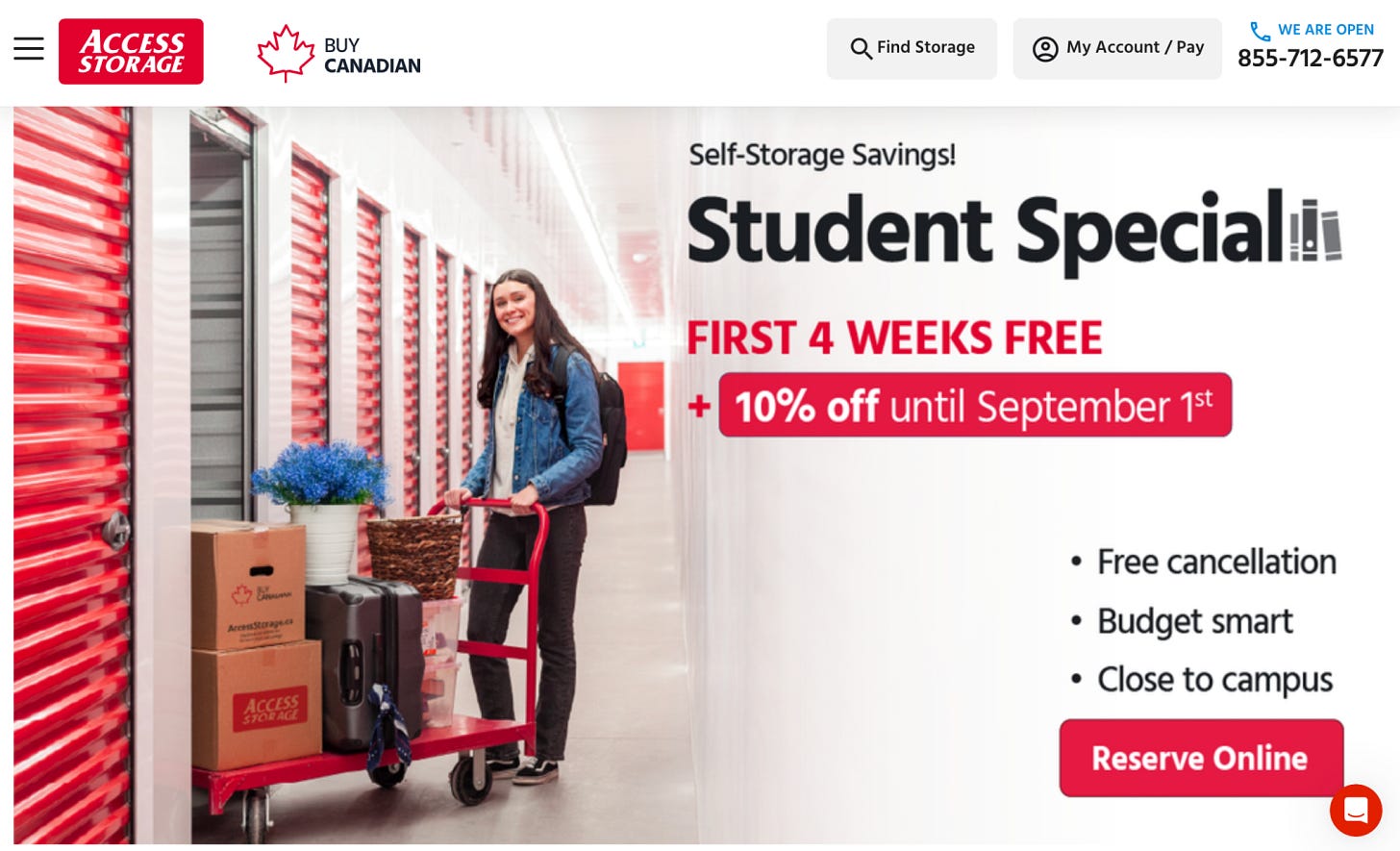How I Drove $2.39M in Revenue with a Cross-Functional Student Storage Campaign
A behind-the-scenes look at building a multi-million-dollar seasonal playbook
In a previous role, I led a national marketing campaign targeting a very specific, but high-potential, audience: students looking for summer storage.
This wasn’t just a one-off promotion. It was an annual campaign that evolved into a tightly coordinated, multi-department initiative spanning marketing, sales, operations, finance, and legal. The result? In its final year under my leadership, the campaign drove 2,170 new rentals and $2.39 million in revenue.
Step 1: Aligning the Offer with the Business
Before any creative work began, I worked with our sales and operations teams to shape a pricing offer and contest that was both enticing to students and feasible to execute at scale. Once we landed on the right incentive structure, I collaborated with our legal team to formalize contest rules and publish the terms online.
Step 2: Training the Front Lines
Execution started well before launch. I partnered with the sales team to equip frontline staff with the training and materials they needed to promote the offer. Operations handled in-store alignment, ensuring store-level staff understood how to execute the promotion seamlessly.
Step 3: Multi-Channel Rollout
We launched an integrated go-to-market plan across email, social media, paid media, referral programs, PR outreach, and in-store signage. Our goal was clear: reach students wherever they were: online, in-store, and on campus. We also pitched the story to journalists to earn additional media coverage and build brand credibility.
Step 4: Project Management and Performance Tracking
To keep all teams aligned, I built a work breakdown structure (WBS) to assign responsibilities and track progress. Weekly check-ins ensured we were on schedule, and post-launch, I hosted monthly performance reviews and shared a real-time dashboard that tracked conversions, ROAS, and operational KPIs.
The Results
By the campaign’s final year, it had become a well-oiled machine, driving over 2,000 new rentals and more than $2.3 million in revenue. Just as importantly, it served as a model for how integrated, cross-functional campaigns can drive measurable growth when strategy, execution, and accountability are all in sync.
Total Lifetime Revenue = $2,390,000
Total New Rentals = 2,170
Lifetime Revenue per user = $1,100
CPA = $110 (across all channels)
ROAS = 9.64
This gives us a CPA of about 10% of the LTV of a user, which is where an established business should be. If StorageVault was in a growth phase, I would be happy with 30%. However, the rule of Thumb is 10% for an established business.




